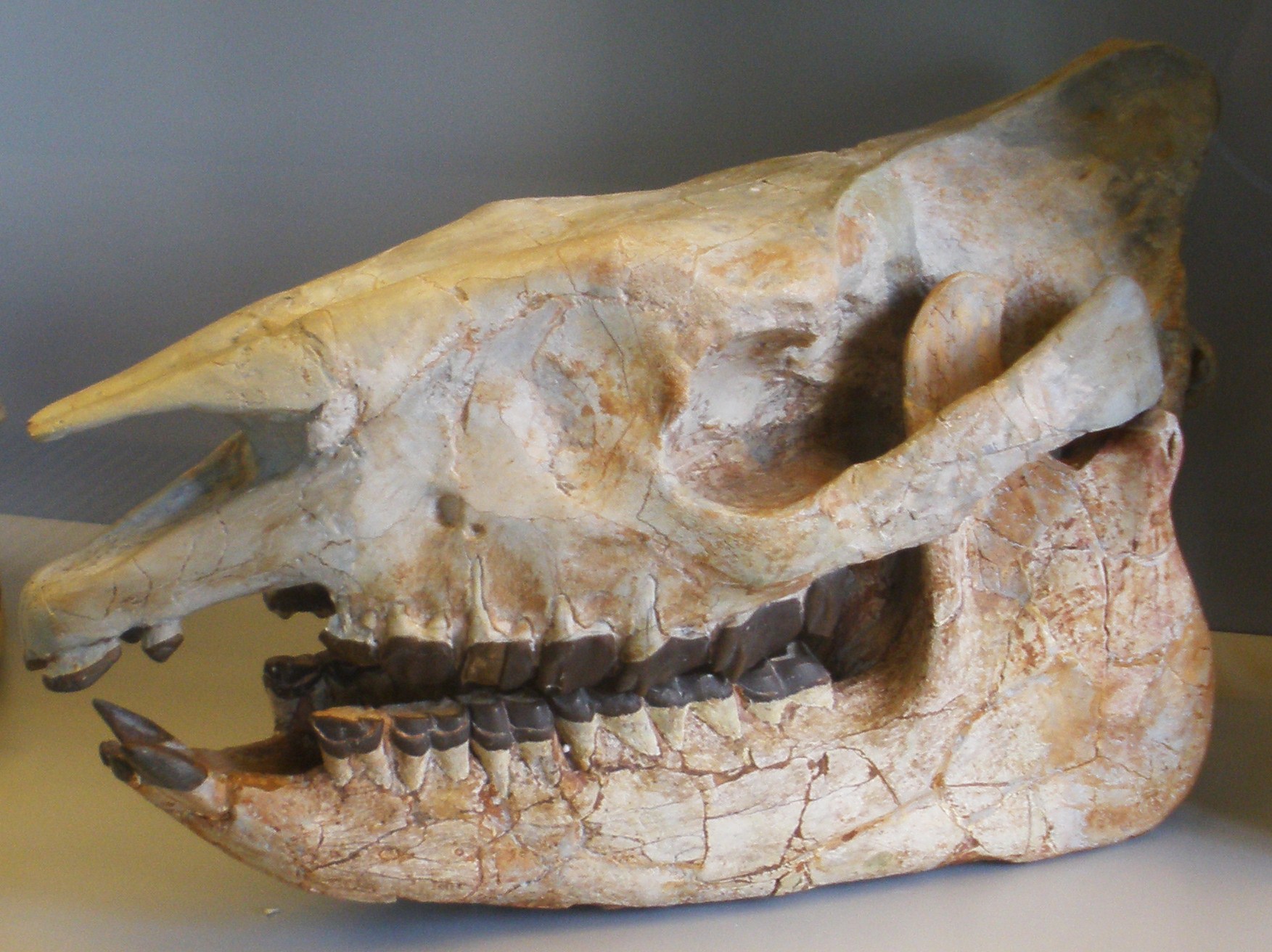Subhyracodon on:
[Wikipedia]
[Google]
[Amazon]
''Subhyracodon'' (Latin: "below" (sub), + Greek: "hyrax" (hyrak = 'shrewmouse'), and "tooth" (odontos, referring to the genus ''
Wind Cave National Park page on ''Subhyracodon''Paleobiology Database query for ''Subhyracodon''
{{Taxonbar, from=Q139803 Eocene rhinoceroses Chattian genus extinctions Oligocene rhinoceroses White River Fauna Oligocene Eocene mammals of North America Oligocene mammals of North America
Hyracodon
''Hyracodon'' ('hyrax tooth') is an extinct genus of perissodactyl mammal.
It was a lightly built, pony-like mammal of about 1.5 m (5 ft) long. ''Hyracodons skull was large in comparison to the rest of the body. ''Hyracodon's'' dentit ...
'')) is an extinct genus
Genus ( plural genera ) is a taxonomic rank used in the biological classification of living and fossil organisms as well as viruses. In the hierarchy of biological classification, genus comes above species and below family. In binomial n ...
of hornless rhinoceros
A rhinoceros (; ; ), commonly abbreviated to rhino, is a member of any of the five extant taxon, extant species (or numerous extinct species) of odd-toed ungulates in the family (biology), family Rhinocerotidae. (It can also refer to a member ...
es. With a length of and a weight estimated of (in ''S. mitis''), it was a tapir-sized herbivore on the plains of early Oligocene
The Oligocene ( ) is a geologic epoch of the Paleogene Period and extends from about 33.9 million to 23 million years before the present ( to ). As with other older geologic periods, the rock beds that define the epoch are well identified but ...
South Dakota
South Dakota (; Sioux language, Sioux: , ) is a U.S. state in the West North Central states, North Central region of the United States. It is also part of the Great Plains. South Dakota is named after the Lakota people, Lakota and Dakota peo ...
33 million years ago (White River Fauna
The White River Fauna are fossil animals found in the White River Badlands of South Dakota, Wyoming, Colorado and Nebraska in the United States including Badlands National Park.
The fossils have been found in the White River Formation, Chadron ...
). It coexisted with other perissodactyls such as horse
The horse (''Equus ferus caballus'') is a domesticated, one-toed, hoofed mammal. It belongs to the taxonomic family Equidae and is one of two extant subspecies of ''Equus ferus''. The horse has evolved over the past 45 to 55 million ...
s, brontothere
Brontotheriidae is a family of extinct mammals belonging to the order Perissodactyla, the order that includes horses, rhinoceroses, and tapirs. Superficially, they looked rather like rhinos, although they were actually more closely related to h ...
s, and chalicothere
Chalicotheres (from Greek '' chalix'', "gravel" and '' therion'', "beast") are an extinct clade of herbivorous, odd-toed ungulate (perissodactyl) mammals that lived in North America, Eurasia, and Africa from the Middle Eocene until the Early ...
s. ''Subhyracodon'' had no horns, relying more on its speed to escape from predators, but a species found at Wind Cave National Park
Wind Cave National Park is an American national park located north of the town of Hot Springs in western South Dakota. Established on January 3, 1903 by President Theodore Roosevelt, it was the sixth national park in the U.S. and the first cave ...
had a pair of bony nasal ridges. The genus ''Caenopus'' and species originally referred to as ''Aceratherium'' were synonymized into ''Subhyracodon''.
References
External links
Wind Cave National Park page on ''Subhyracodon''
{{Taxonbar, from=Q139803 Eocene rhinoceroses Chattian genus extinctions Oligocene rhinoceroses White River Fauna Oligocene Eocene mammals of North America Oligocene mammals of North America